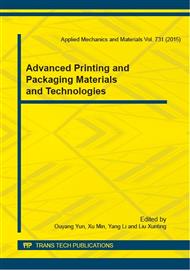p.147
p.153
p.159
p.163
p.169
p.173
p.179
p.183
p.187
A Novel Approach of Edge Detection Based on Gray Correlation Degree and Kirsch Operator
Abstract:
Image edge detection plays an important role in the process of image processing. This article classified the effect of various edge detection algorithms of digital images, mainly through the analysis of characteristics of the commonly used several kinds of classical edge detection operator in the time domain. For the actual image, the edge of the gray scale is sometimes not very clear, and the image also contains noise. A new algorithm of edge detection based on gray correlation degree and Kirsch operator is discussed in the paper. Kirsch operator is the reference sequence. Firstly, calculate the gray correlation degree of each pixel in the image and its neighbors formed eight action sequences and reference sequences, then determine the detection of edges based on gray correlation degree. The results show that this method can more accurately detect the useful information of the edge, and has a certain noise immunity. It is an effective and feasible new edge detection method.
Info:
Periodical:
Pages:
169-172
Citation:
Online since:
January 2015
Authors:
Keywords:
Price:
Сopyright:
© 2015 Trans Tech Publications Ltd. All Rights Reserved
Share:
Citation:


